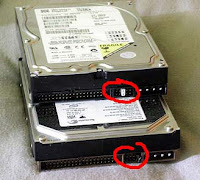Safeguard your data – easy steps you can take to prevent data loss
Author: John BestFact – computer components fail, they always have and most likely always will. The sad truth is if you are storing your family photos, videos, songs and work documents on a computer's hard drive I can tell you with complete certainty that one day that hard drive will fail. It is going to happen and oftentimes it comes with no warning. Hopefully, with a few preventive measures you can avoid the loss of data and not have to resort to hard drive recovery.
Hard Drive Failure
What causes a hard drive to fail? Well to start with almost all hard drives are mechanical. Mechanical devices cause friction. Friction causes wear. All mechanical devices will eventually wear out and no longer function. Aside from the fact that a hard drive will fail eventually no matter what, the other culprits are shock, electricity and heat. If a computer or external drive gets dropped or bumped while the hard drive is spinning the drive can become damaged. Also a power surge or too much power from the outlet can cause the drives electrical components to fry. Lastly, and probably the biggest culprit is heat. A hard drive running too hot will cause the drive to fail much faster than a drive operating in the ideal temperature range. What is the easiest way to prevent a hard drive from heating up? Airflow – make sure your computer case has adequate airflow via case fans and is not blocked or enclosed in a small area. Without proper airflow all that heat stagnates around the hard drive getting hotter and hotter.
Preventing Data Loss
So now you know your hard drive is going to fail, right? Good. Now what are some steps to take to prevent losing all of your data when your drive does fail?
- Always, always keep your data in at least two places. If you're paranoid, then keep it in three places.
- Keep a copy in a separate location to prevent data loss from natural disasters, fires, etc…
Here are some ideas you can use to store a backup of your data on:
- An external hard drive – these are getting cheaper every day. A 500 GB external drive can be purchased for less than $50.00.
- USB flash drive – smaller capacity than an external hard drive but are cheaper, more portable and less likely to fail.
- Second computer – if your household has more than one computer you can setup file sharing and have each computer back up to another.
- Online – backing up your data online gives you a second copy as well as being in a separate location. There are backup services like Mozy and Carbonite, not to mention there are social network sites you can upload your photos and videos to as well.
Article Source: http://www.articlesbase.com/data-recovery-articles/safeguard-your-data-easy-steps-you-can-take-to-prevent-data-loss-4587843.html
About the Author
John Best is the Information Technology Director at DTI Data Recovery, http://www.dtidata.com/
For Email Newsletters you can trust




